A Strategy for Long-Form Brand Films
How to balance emotional and rational marketing. The "100 Reasons Why" example.
I recently watched the film “100 Reasons Why” that Adidas Terrex created around Western States this year. It’s a fun film that hooked me for a whole 50-minutes by giving me context around both the athletes and the brand. It quickly dives into the backstories of Petter Engdahl and Yngvild Kaspersen by visiting them at home. Those two did not have wildly successful races (ie they didn’t win) but it had zero effect on the power of the film (clarification - Yngvild had a great race, not knocking her, the performance isn’t the point). The story portrays the athlete team as genuine humans and shows us they are more than one-dimensional performance athletes. Each athlete’s individual brand shines - a win for sports marketing. We saw similar effective athlete marketing from Salomon years ago but, with a couple exceptions, I haven’t seen it done to the same level since. Hopefully Terrex gets on a roll because that Salomon effort took great athletes like Anna Frost and Ricky Gates and helped them become legends.
The “100 Reasons Why” film does a fantastic job of associating both the athletes and the brand with hard work, success, heartbreak and community. As a result the humanity of the athletes is bestowed to some degree onto the brand. I found Chinese athlete Chen Lin particularly engaging. With many brands in our space growing like crazy in China her story is an opportunity for Terrex. Despite a performance below his potential I am now a much bigger fan of Petter. His humanity was on display. That authenticity creates emotional trust for Petter, Chen Lin and the brand. Critically, that emotional trust is a foundation that brands must establish through brand marketing.
I give a lot of credit to Terrex because it has spent years (a decade?) growing a great athlete team and carving out its place in trail running without many (any?) good products . . . until recently. The Agravic Speed Ultra is a great shoe that has notched big wins for Terrex athletes (Ruth, Tom, others) and non-Terrex athletes (David Roche smashing the 19-year old course record at Leadville). So now that the product has come around the brand has even more credibility to lean on. Again, more trust. Let’s call this rational trust - more on emotional vs. rational later.
Last week I was driving to BPRunCo to support the premiere of JUNKO, a film I created for the launch of my running lifestyle brand Auteur Sportif. During the drive I queued up an episode of the Second Nature podcast (shout DBo and Aaron Lutze). The guest, Matt Sharkey, is a story-driven marketing guy who knows his way around a film camera and has led a curiosity-driven career path - all things I very much identify with. The episode was a fascinating dive into Sharkey’s career as a go-getter with some dialogue around athlete marketing as it pertains to the shared background of all three guys. Give it a listen.
The end of the pod always gives the hosts and guests a chance to bring up a a brand, product or piece of content they find interesting. Sharkey brought up the “100 Reasons Why” film from Terrex. He impressed me by having both praise and criticism for the film which I found particularly constructive - so much so that I felt compelled to dig deeper and chime in myself.
Sharkey praised the film for being a great representation of the atmosphere and affinity the community has toward Western States. I agree 100%. He then criticized the film for failing to integrate product marketing by leaving out a tie to the innovative technologies from Terrex. He went further to say the industry in general doesn’t do this well.
This is where my intuition disagreed. Based on my experience, product marketing should play no part in a film like this, it loses people. The emotional approach is the way to go. I decided to dig deeper.
Having been involved in many brand films around athletes and races, I’d say Terrex played it 100% correctly by not confusing the film as anything but brand marketing. Mixing both brand marketing and product marketing would change the viewer’s experience from feeling entertained to feeling sold. It stops telling us about ourselves and starts to tell us about you. It shifts the value from benefiting the customer to benefiting the brand. The purpose of a long-form film is to create entertainment value for the viewer and earn you the right to focus on product marketing later. The film loses value if it tries to do all the things - the variety of purposes trample on each other. Trust will be lost. And that is THE purpose of a film like this - to establish an emotional connection to the brand.
But all of that said, let’s go deeper for more information. As I was writing this article I stumbled upon an incredible substack post from Kira Klaas that goes into the weeds on the balance required between emotional (brand) and rational (product) marketing activities (it’s seriously so good). Kira cites 2 brilliant studies from Les Binet and Peter Field that base their findings on over 1,000 campaigns from various industries. The study I’ll cite using the charts below is titled “Balancing Short and Long-Term Marketing Strategies” but both studies are a must read for any marketing leader. These studies put the final touch on the strategy I would take with longer-form brand films if I were Terrex or other brands (read on).
Binet/Field are able to show that in the short/medium-term a combined marketing approach is the most profitable. In the long-term, however, the emotional approach wins because customers become far more loyal and are willing to accept higher pricing.
The study goes on to draw conclusions as to the optimum balance between emotional and rational marketing. Klaas’ substack sums it up as well as I ever could:
“The study’s headline takeaway is their recommendation for marketing budget allocations: Spend 62% of budget on brand, and 38% on growth. The most effective (profitable) and efficient (ROI-positive) campaigns deploy long-term brand building alongside short-term activation (whether that’s acquisition, retention, etc.).”
One last quote from Klaas really hit home for me:
“If your audience is aware of you and is positively disposed towards consideration, tactical growth efforts will be much smoother and higher ROI.”
So we can say that emotional marketing is the foundation that sets the brand up for other forms of marketing to be effective down the funnel. It creates a runway for future growth activities to land. So now, after watching “100 Reasons Why”, when I get served a social ad for the Agravic I’ll take the extra pause that allows it to hit. Maybe I’ll click because I can relate to it. When I see a Terrex shoe review from iRunFar/Outside/Believe in the Run I’ll give it a watch because I associate them with Petter and Chen Lin. I’ve connected emotionally first and now I am primed for more. Without strong brand building activities there is no runway and product marketing or growth efforts crash and burn. The proven balance between building runways and flying planes is 60% runways, 40% planes.
In this case, we know that a 2024 Western States story has a shorter shelf-life (1-2yrs max vs. 3+ years). A year from now the 2025 story will be far more relevant. So, if I were Terrex I’d take a combined strategy for this particular campaign. I’d then execute by creating separate product cutdowns to associate the film with the product technology. I’d put a clip or image from an emotional moment in the film next to a product shot of the Agravic. Then put some dollars behind it and really leverage that runway with a performance campaign that converts on the equity from the film and all 93k views (as of this writing). First and foremost, however, the film must be given freedom to set the table by establishing emotional trust or everything afterward rings hollow. I’d still leave any product marketing out of the film.
I had a conversation with someone close to the film and while there was some talk about whether to include the athletes in the lab it was never an objective to push product marketing. Adidas already does a great job of going heavy on product marketing in a different silo although I can’t say that I’ve seen any directly related to this film. Despite there being some trepidation within the production team about the 50-minute length, the film always had a brand marketing objective.
In general brands across the board are too quick to skip over brand marketing and jump to growth campaigns. As a result, engagement metrics on social channels are steadily declining. (See graphic above). An awful lot of runways are crumbling because an imbalance of time and dollars are spent throwing a million planes in the air. I’ve spent years being asked to create those planes for a lot of different brands. My team once created 48 various videos from 30 seconds down to 6 seconds (for one campaign!) and there are plenty of productions out there that create way more than that. Building a brand is a critical long-term investment - an annuity - and it takes time to grow. Like your 401k, the continuous contribution to brand builds compounding value over time. So stop throwing planes around without put time into your runway. I’ll drop this graphic up here again because it’s extremely powerful - who doesn’t want long-term sales increase and reduced price sensitivity?
Bringing it back to Sharkey’s critique - I agree that there would be value in adding a product marketing component alongside this Terrex film BUT I would lean on my intuition and do it separately from the film. I’d also lean into brand films that aren’t as short-lived as a race film because then we could take a 100% emotional angle. Athlete or brand stories that are more evergreen should be treated this way for maximum long-term impact. The urge to always include rational product messaging within campaigns is a misconception I encounter too often and it kills the upside of long-term growth. Hopefully the studies and article referenced provide some much desired data for all the analytical minds out there. It’s imperative that brand and growth marketing work in tandem. When you spend the time cultivating the soil (brand), the growth efforts bear far more fruit.





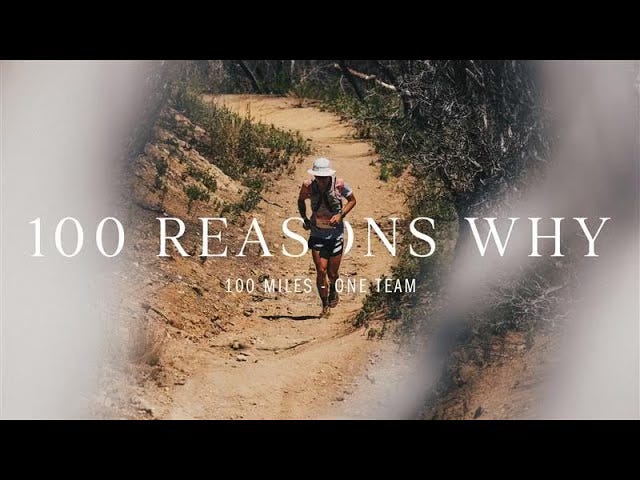
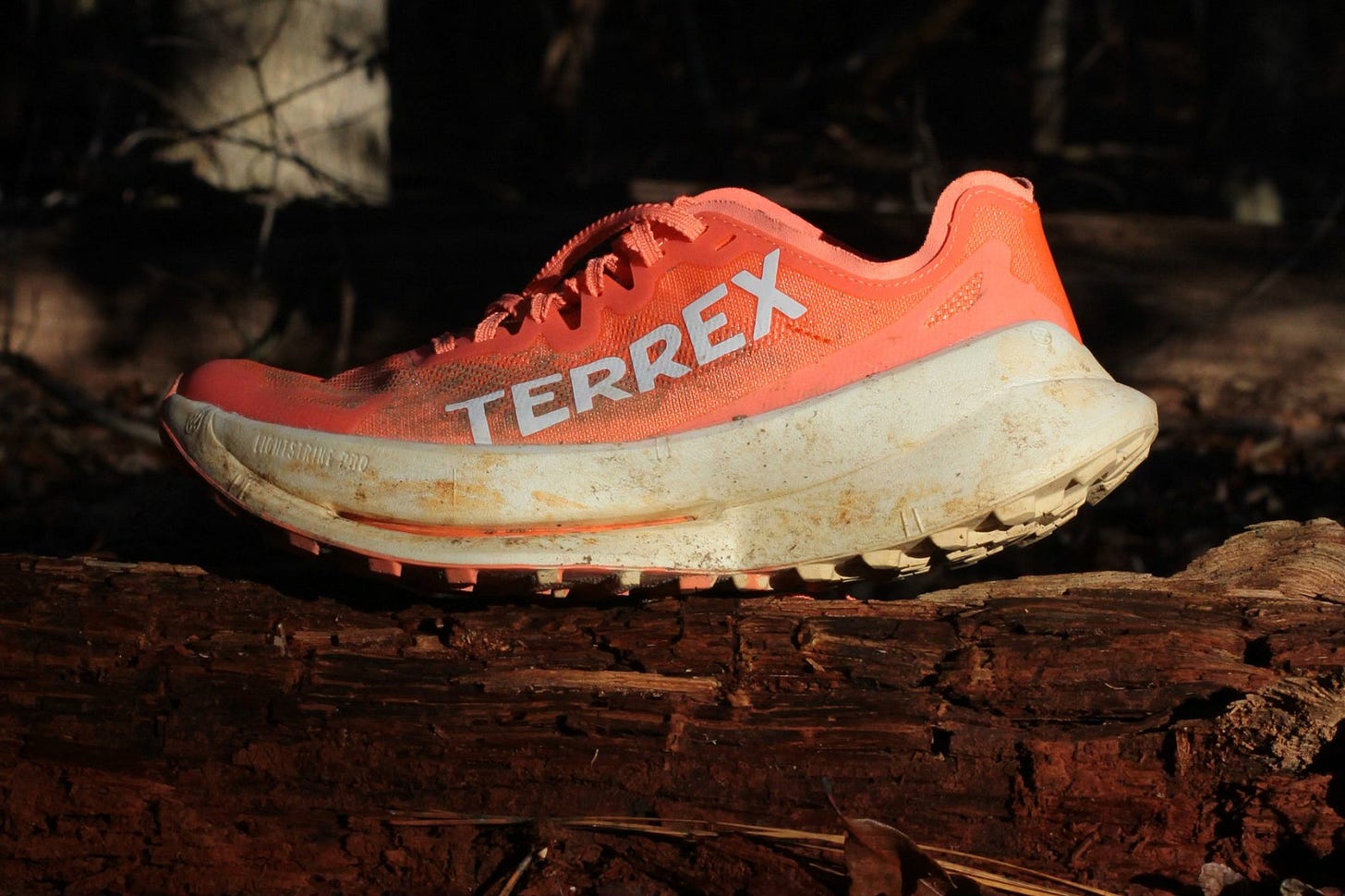
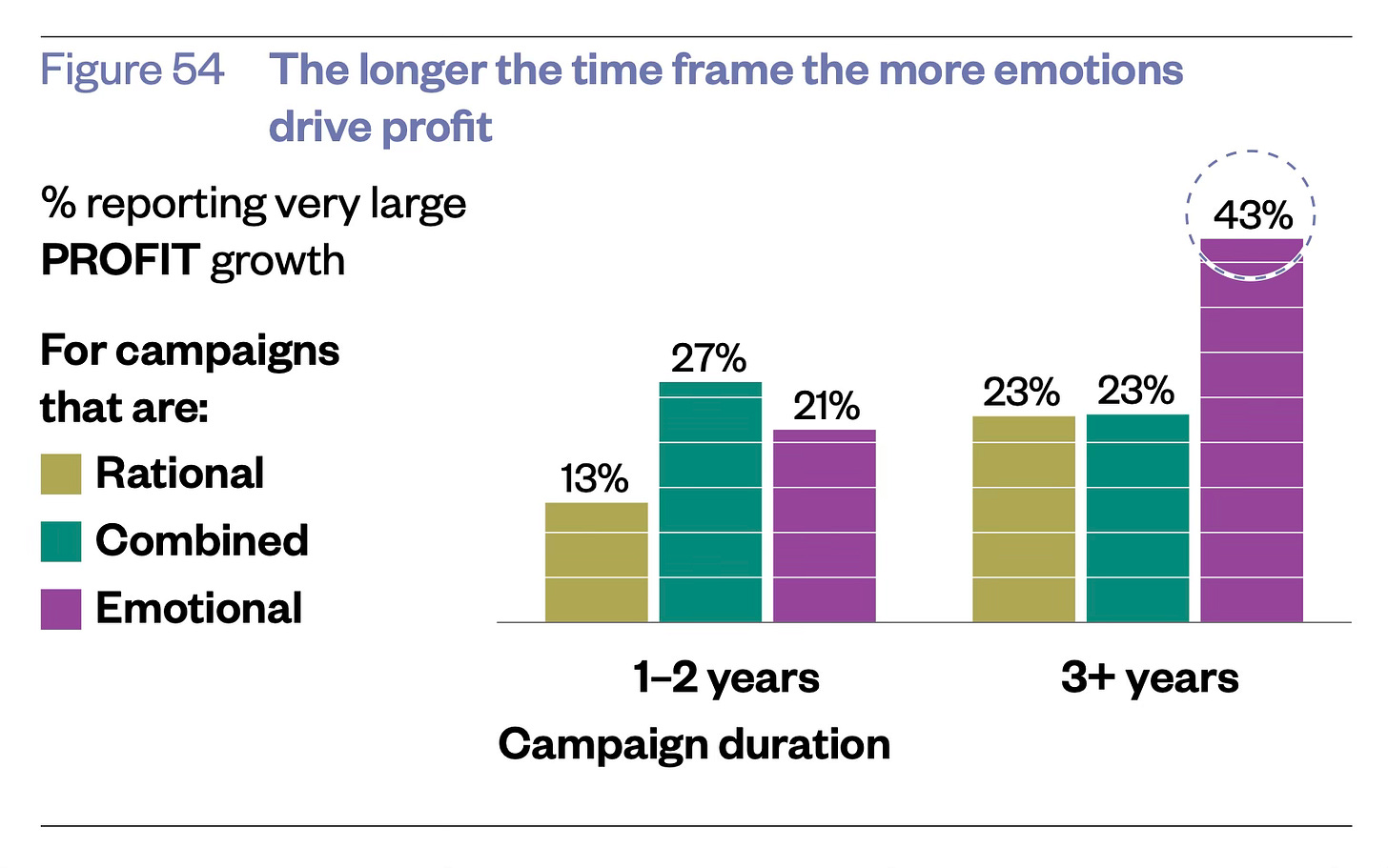
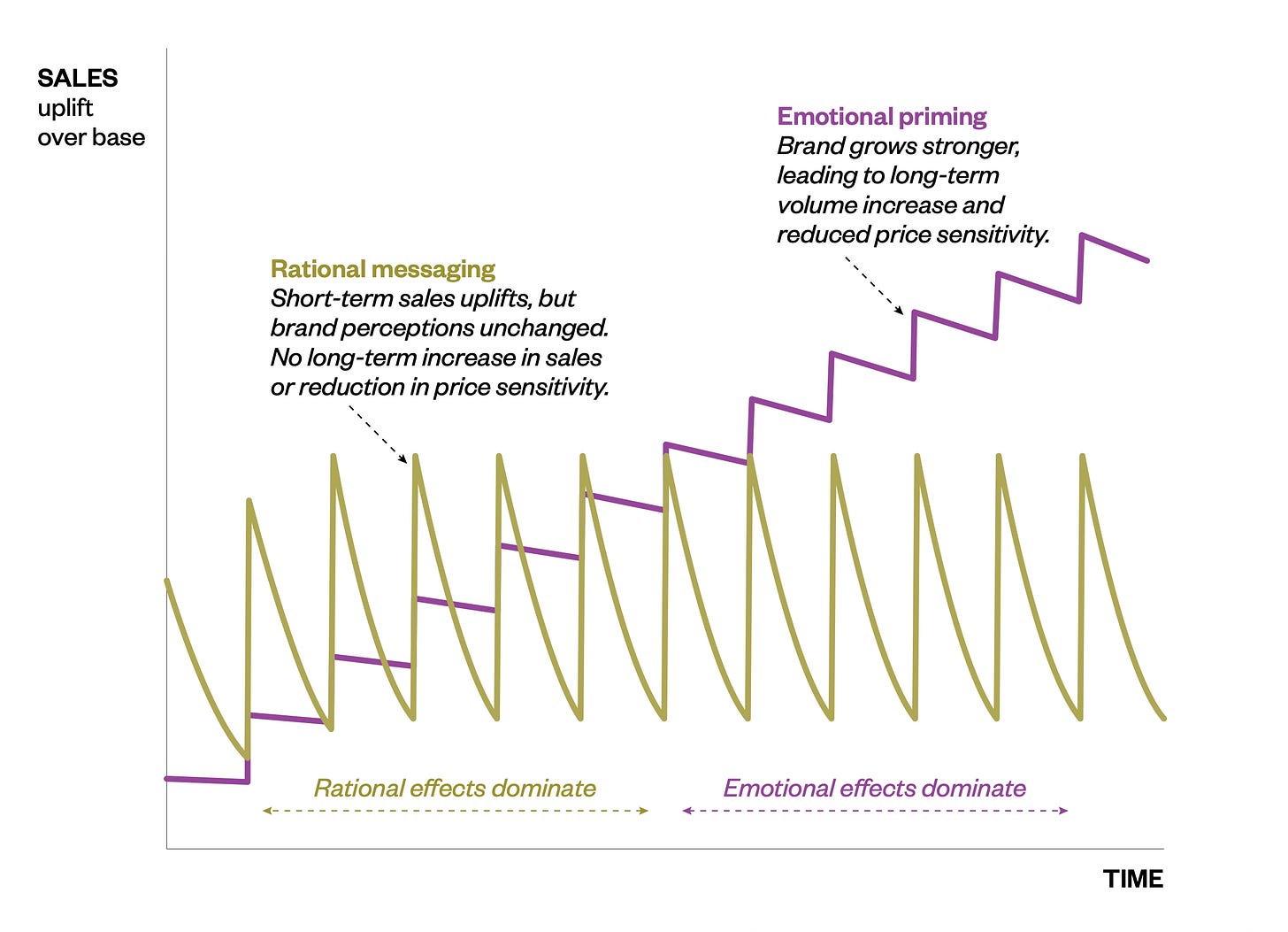

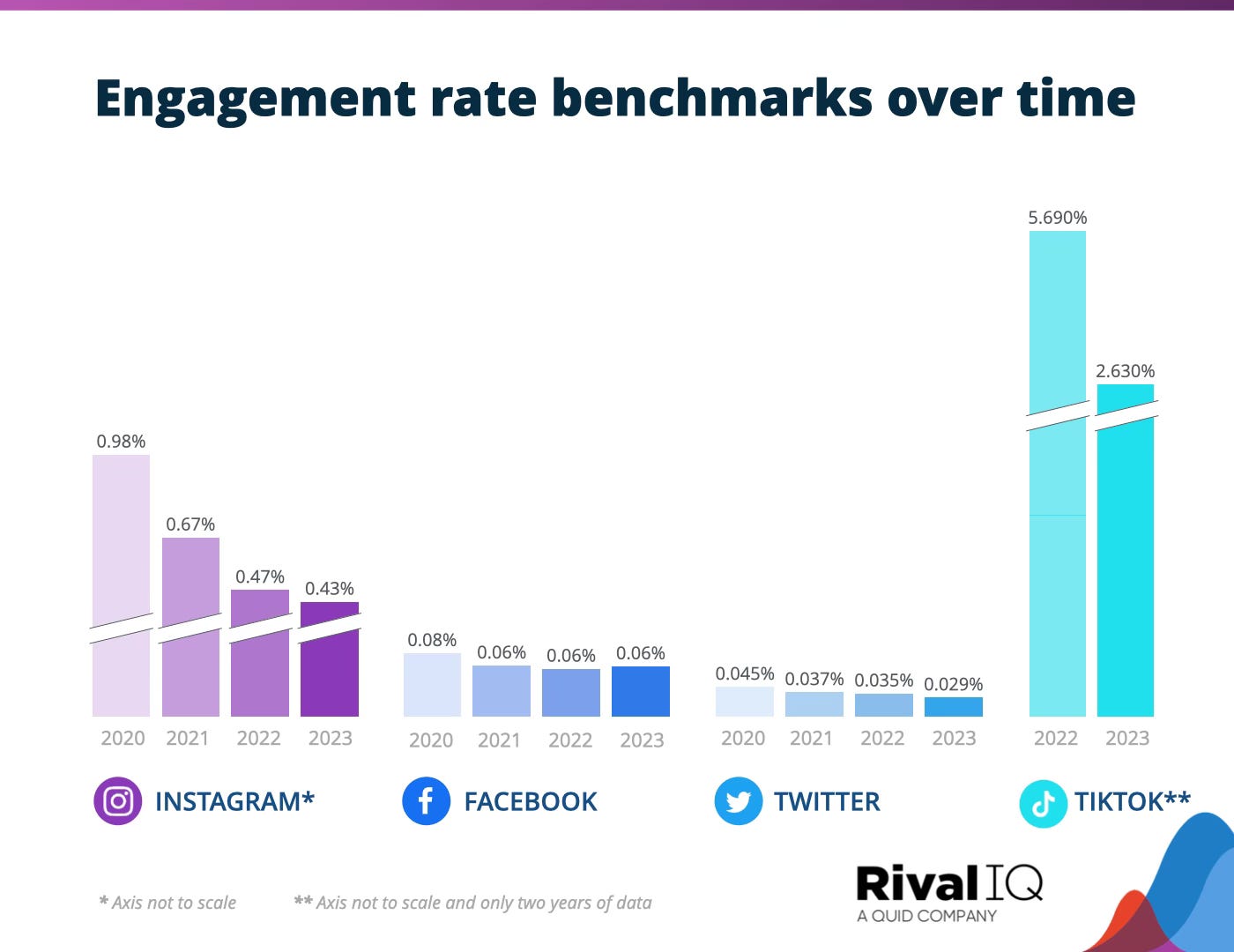
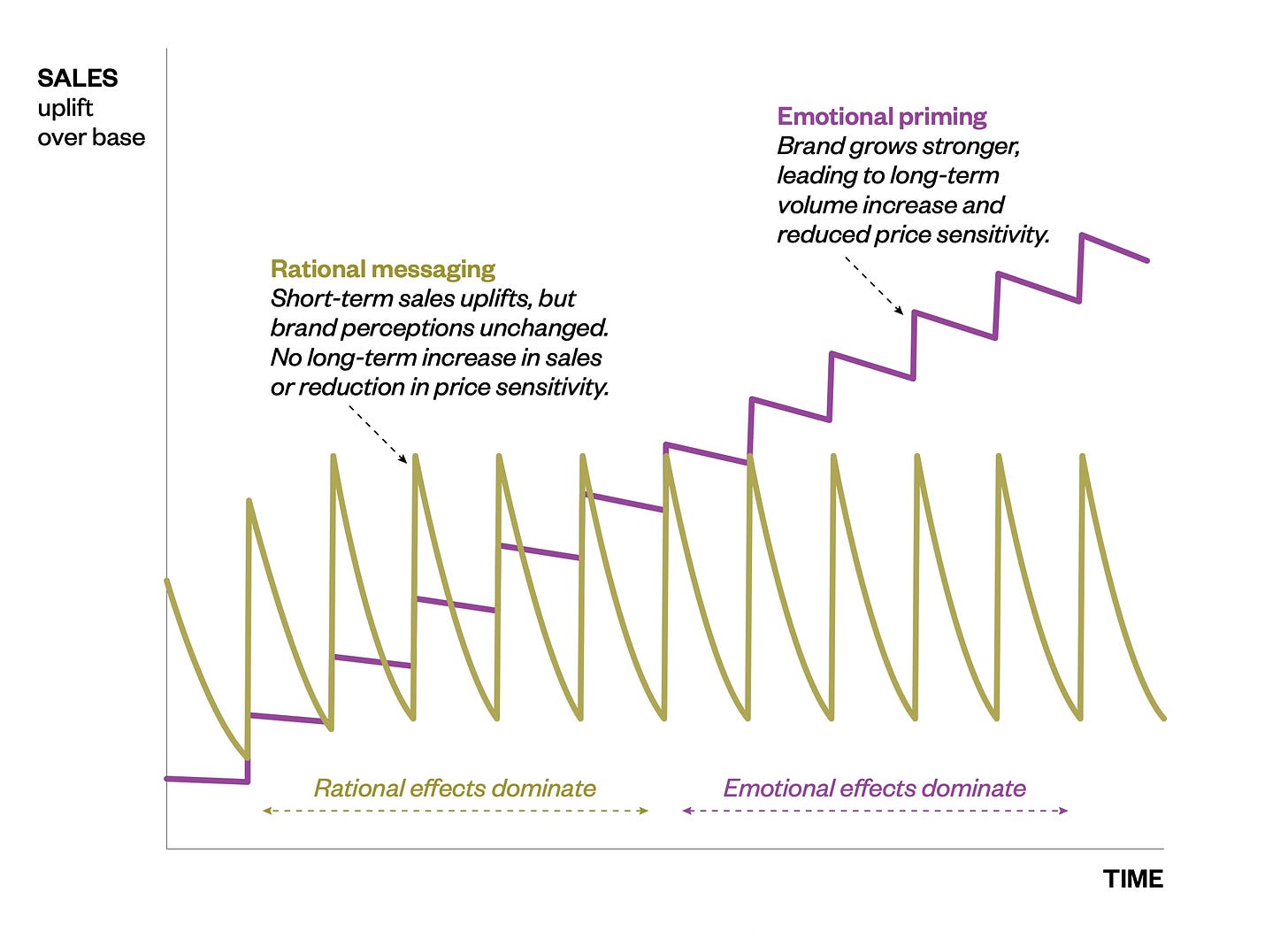
I really love this perspective, Matt, and greatly appreciate you taking the deeper dive. Particularly thankful for sharing Kira's substack as well (Every member of any company's C-Suite would greatly benefit from this understanding of investing in Brand/Growth).
It’s challenging to fully represent one’s thoughts on this subject in a short segment of a podcast. You and I are much more aligned than you might think. I completely agree on your POV regarding the difference between being entertained vs. being sold. I do, however, believe that there are very subtle ways in which you can integrate product attributes authentically that can have resounding impact.
When you have a remarkable team of athletes, great branded content, have been in the marketplace for over a decade and you’re still fighting for the 6th, 7th or 8th spot for shelf space in run specialty’s largest market, you might need to insert a small sliver of a reference to the product that is helping to place your team on podiums to give your brand the added boost it needs.
I’d never suggest a full-on infomercial dropped into an emotional brand piece. Just something that can subtly sit in the back of the viewer’s mind as they spend 50 minutes with you watching your athletes run one of the most prestigious ultras in the world.
Strategically, I agree with letting long-form, emotionally driven content stand-alone and cutting product-focused take-downs that can be used to support your growth/performance objectives. But only if your distribution strategy for that content is well-resourced. Otherwise It won’t have the redundancy it needs to make an impact amongst the noise of an increasingly crowded marketplace.
One of the points I was intending to reference but didn’t directly state during the podcast was the specific lack in the Outdoor industry of utilizing professional athletes within product marketing. Traditional stick and ball sports do this much better than Outdoor does and we can all learn from it and improve upon it more authentically.
Thanks again for the deeper dive, Matt, love this!